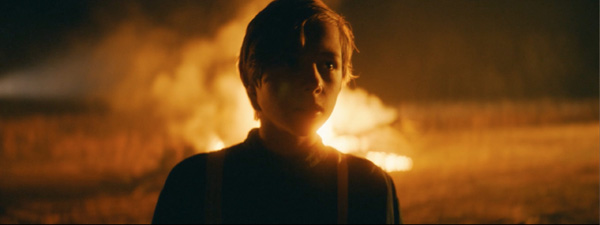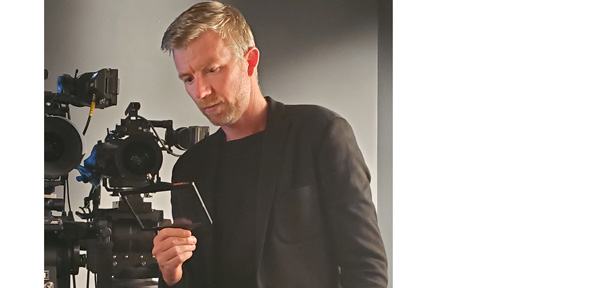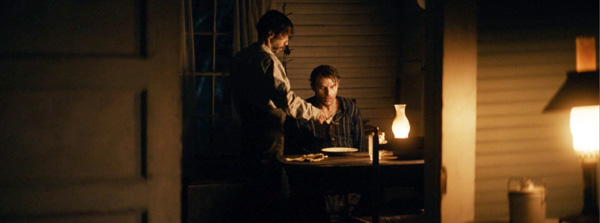Cinematographer John Matysiak chose Tiffen diffusion filters to control contrast and sharpness, creating a harsh, unforgiving look while taking advantage of fast, consistent modern lenses.

Choosing an historic lens has become an instinctive choice for modern cinematographers, especially those that want to transport an audience back in time. For the recent western film, titled ‘Old Henry’, cinematographer John Matysiak took a different approach to creating a realistically harsh, unforgiving world. Inspired by photographers of the time, John carefully chose Tiffen diffusion filters to control contrast and sharpness while also taking advantage of the consistency and speed of precise modern lenses. He shot the film with the ARRI Alexa Mini 2.8K, recording Pro Res 4444 XQ.
Director Potsy Ponciroli's historic fiction unfolds in a harsh, unfair world where the audience watches hard-bitten characters in images carefully enhanced with glow and flare. The typical sunbaked deserts of classic westerns are absent. The story plays out largely under a bleak overcast sky, or in soft flicker of candles and oil lamps. Filter choices augment both features, creating images far removed from common assumptions about anamorphic photography – and from the distracting sharpness and clarity of modern lenses.
Creating Texture
"There are a lot of ways to create texture in an image," said John. "For me, the choice of lens is one way, and choice of filtration is another." Older glass, especially given his desire to shoot anamorphic, might have been less versatile than adding a selection of filters. "We were going to be creating a world," he said. "I did not want to be distracted by distortions we couldn't control."
With that in mind, he chose ARRI Master Anamorphic lenses and Tiffen Pearlescent, Black Satin and Black Pearlescent filters, selecting types and strengths based on the specifics of each frame, and particularly favouring Black Satin filters for their balance of halation, diffusion and contrast control. "Black Satins probably won out more," he noted. "It was mainly Pearlescents on exterior shots, and Black Satins on interiors, but I'm not so categorical. It goes back to emotion, asking myself, is this filtration working on this shot or on this sequence?”

Cinematographer John Matysiak
They aimed for a very gray, overcast palette and avoided shooting in full sun. Lighting, especially any light source in frame, particularly influenced his choices. "One of the biggest challenges when shooting a film that takes place before the advent of electricity is how to motivate light sources at night. We used a mix of actual oil lamps as well as lamps that we'd wired up with our own bulbs."
Light Balance with Filters
One night interior, featuring Henry himself and a wounded gunslinger, used both approaches. With a finely divided range of filter strengths, John could precisely pursue his vision of the right balance of halation and highlight control. Halation shows light spreading beyond its natural boundaries, and forming a fog at the edges of a bright image.
Bolder effects appear during a flashback sequence, for which John's fiery backlight produced a surreal quality. He said, “The filtration added a slight imperfection to the image that ended up feeling truly authentic to the emotion we were trying to convey, and that was really enhanced in camera by the different strengths of filtration we used. That's what I like about Pearlescents and Black Satin. You can select how much halation you want to have based on the highlighting in the frame."
Much of the film used filter strengths between 1/8 and 1/2, with stronger filters used on day exteriors and subtler ones where halation might become too obvious. "If there was too much halation you might go down to a 1/8, but never clean. Not even on the night exteriors. We always had some filters in the mattebox to keep consistency," he said.

Modern Lenses
Meanwhile, the performance of modern lenses allowed John to keep sharpness consistent, even in challenging circumstances, and meanwhile maintaining the distinctive anamorphic look. "As soon as we lost that direct light on our exteriors, that's when we were going to shoot our big wide shots," he said, "I learned on one of my first jobs using Master Anamorphics that you can shoot wide open, distort it with filters, and then shoot an extra half hour. That's an eternity, enough to get the second half of a scene!"
Monitoring and grading choices interact with filters naturally, and John carefully integrates the two. "For ‘Old Henry’, we took LUTs that I had developed and adjusted them to be a little more in tune with the look we were after, but there are certain things you can't achieve in grading. You need to have the optical effects, and filtration is key to that—you can't just add a filter in post."
According to John, making sure everyone is aware of the cinematographer's intent is most easily achieved using in-camera tools. "It's rare that we have the kind of control we'd need to say we're going to do something in post. I try to leave every project with something I'm happy to present to the world. Some cinematographers keep filtration secrets, but I'm pretty much an open book. While different cinematographers might use the same filters or the same set of lenses, every image is ultimately going to be uniquely your own." tiffen.com





